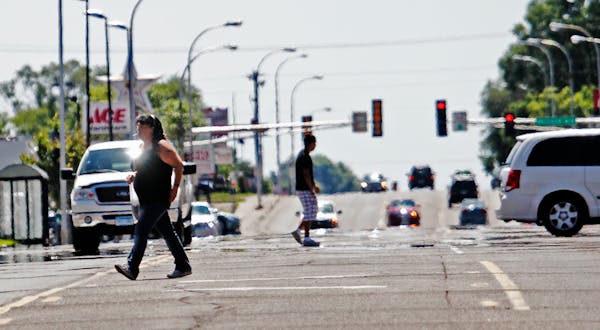The Drive's e-mail box frequently fills with reader questions about driving laws and techniques. Mary, from Bemidji, Minn., asked about the correct way to make a left turn from a two-lane road onto a four-lane road when intersections are separated by a median several feet wide.
"It's not clear to me, when I am on the minor road turning left onto the highway, and another driver coming from the opposite direction is also turning left, do we make our turns in front of each other?" she wrote in an e-mail. "Or, because of the distance ... do we drive just past each other, then make our left-hand turns? Is there a defining distance that determines the type of turn in this situation?"
The Drive posed her questions to Ray Kroll, Region 5 director of the Minnesota Driver and Traffic Safety Education Association and a driver's education instructor at De La Salle High School in Minneapolis.
When motorists coming from opposite directions are making left turns onto a road or highway split by a median of sufficient width, like a grassy median several feet wide, motorists should pass each other before making their left turns, Kroll said.
"My experience is that it should be wider than the length of a normal size vehicle," Kroll said, pointing to intersections along NE. Stinson Boulevard between St. Anthony Boulevard and NE. 18th Avenue in Minneapolis.
The answer for motorists coming from opposite directions making left turns at regular city intersections is illustrated on page 24 of the Minnesota Driver's Manual.
In this situation, "drivers never drive in front of each other, rather they turn left without crossing each others path," Kroll said. "In other words they remain on the right side of each other."
That would be the case for eastbound and westbound traffic turning from University Avenue in St. Paul onto northbound or southbound Snelling Avenue. Signalized turn arrows are used to direct left turns at that intersection.
The Minnesota Driver's Manual instructs drivers making a left turn (or right turn) to signal at least 100 feet before the turn and to get into the proper lane well ahead of the point where the turn will be made. Before turning, drivers must yield the right of way to oncoming traffic, pedestrians and bicyclists, the manual says.
When motorists in two or more lanes are allowed to turn in the same direction at the same time, such as with the double turn lanes at Excelsior Boulevard and Hwy. 100 in St. Louis Park, drivers must "always finish your turn in the correct lane," the manual states.
In one situation, the rule about turning left onto a road with two travel lanes in the same direction is not crystal clear. The driver's manual instructs motorists making a left turn to "complete the turn in the first lane right of the centerline."
But the State Court of Appeals in February ruled that the state statute governing left turns only requires drivers to complete the turn to the right of the centerline separating opposite directions of traffic and does not specify which lane a driver must enter.
The ruling came after a Minnetonka man successfully argued he was stopped by police for entering the far right lane and not the one closest to the centerline after making a left turn in September 2018 in Shorewood. The stop led to a drunken-driving citation. The drunken-driving charge was dropped.
Driving school instructors say turning into the nearest available lane is the best practice.
Follow news about traffic and commuting at The Drive on startribune.com. Got traffic or transportation questions, or story ideas? E-mail drive@startribune.com, tweet @stribdrive or call Tim Harlow at 612-673-7768.
Gunfire from vehicle kills 14-year-old in SUV at northeast Minneapolis gas station

